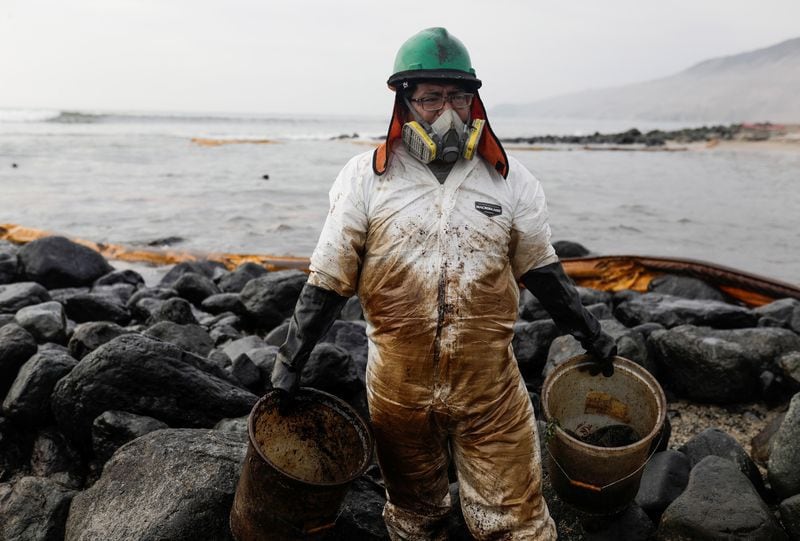:quality(85)/cloudfront-us-east-1.images.arcpublishing.com/infobae/XEFPWDUQQFBUXBKQGFBUFHNHSI.png 420w)
Easter is one of the most important seasons for the national fishing sector. At this time, there is usually a considerable increase in the consumption of seafood, river and lakes compared to other times of the year. The Ministry of Agriculture and Agricultural Development and Irrigation (Minagriculture) reported that fish consumption in the country grew by 0.8 kilograms, going from 8.80 kg in 2020 to 9.60 kg in 2021. This is mainly due to the increase in the price of chicken and meat, in addition to the growth in imports from 87,000 to 114,900.
However, a few months ago, the oil spill that occurred at the La Pampilla refinery in the Ventanilla district, left many monetary consequences, not only in the sector, but also in the merchants around the bay.
The owners of the restaurants say that before the crude oil expanded, they generated 2000 soles a day, while now there are a maximum of 300 soles. For their part, the wineries generated 200 soles a day and now 15 soles in just one morning. Another of the most common activities that were carried out with the family was the boat ride, where 10 soles were charged per person and had 24 boats depending on the same time, now a maximum of 10 of them depart. Likewise, these traders told Latina Noticias that the company that caused the oil spill has not counted them in the registrants to receive the help they promised.
For his part, the Minister of Minagriculture, Rodolfo Zea explained other reasons why fish consumption has increased, noting that fish has been worked with the guilds of 121,000 formalized fishermen.
“From Minagriculture we have our campaign 'Consume what's ours. Sabor de Colombia', with which we promote locally, in supermarkets and distribution centers, the products grown and harvested by our farmers. We want them to consume more and more of what is Colombian and this Holy Week we hope that the numbers will increase,” he said.

According to the National Aquaculture and Fisheries Authority (Aunap), of the total fish production for the week, 21% comes from artisanal fishing and 17% from industrial fishing.
“In 2021, total production of fishery resources was approximately 300,163 tons, representing an average growth of 7% in aquaculture and 12% in fisheries, compared to 2020; and exports amounted to 60,532 tons, reaching nearly 50 destinations,” said the director of the National Authority of Aquaculture and Fisheries, Aunap, Nicolás del Castillo Piedrahita.
Along the same lines, Aunap stated that during Holy Week the consumption of fishery products increased approximately between 20% and 50%. So on the eve of that date the price will also increase.
PRICE OF FISH
Two days before Easter, on Monday the bonito was at S/2 per kilo and today it is at S/3 on camera; horse mackerel was at S/3.50 and now it is sold at S/4, talking about commercial fish. In the case of parakeet, the season is falling and therefore it is at S/15 per kilo, when in its season of abundance the price is S/8 to S/10.
The grouper and croaker are at S/50 per kilo, the grape eye at S/45, the cashmere between S/25 and S/30, the tollo at 20 the same as the suco. Prices may soar between Thursday and Friday due to the influx of people and the lack of supply that exists. They can go up from S/ 2 to S/5 or S/ 10 more per kilo. That is, the sea bass and the grouper can reach S/ 60, according to traders at the fishing terminal of Villa María del Triunfo.
KEEP READING:
